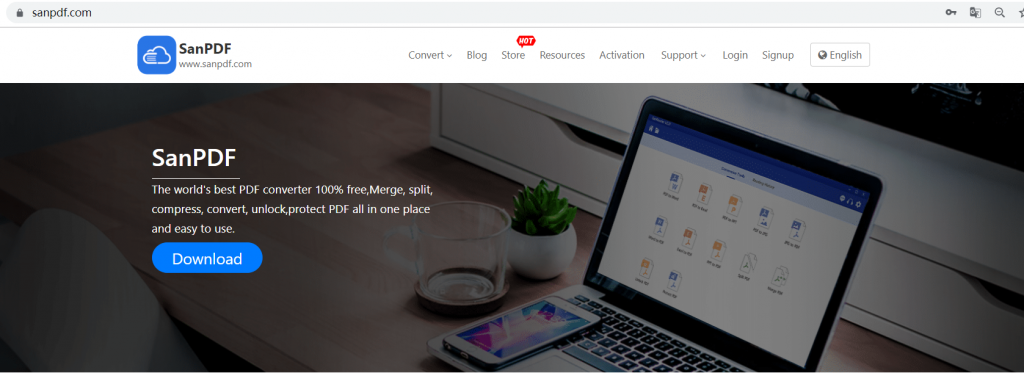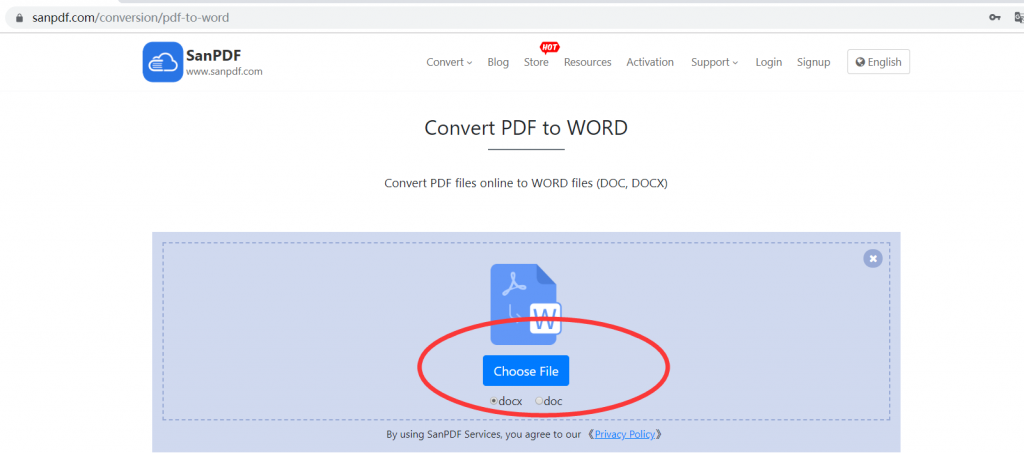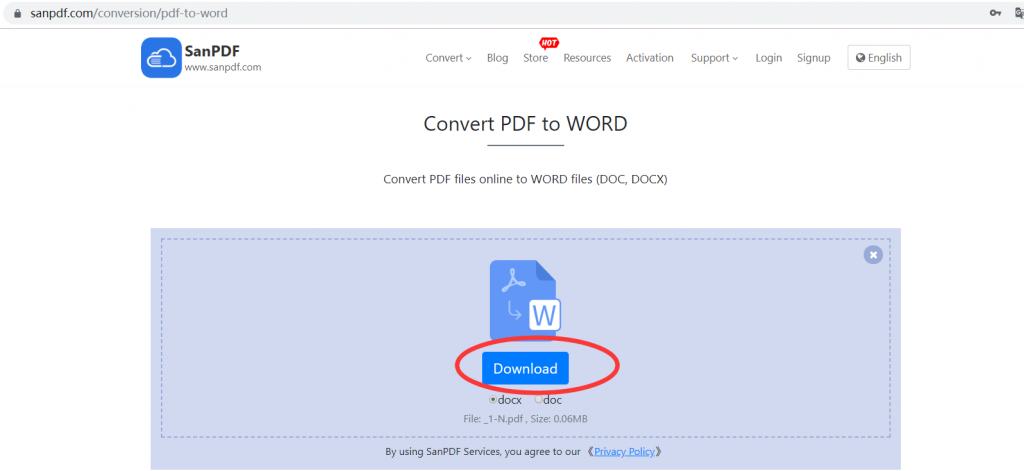ADOBE PDF to Microsoft Office Word (.doc, .docx) is a common operation in daily life, and it is also one of the most common and most common problems for many ADOBE PDF novices. There are many kinds of ADOBE PDF converters today, there are many good ones, and there are many general evaluations. There are also many evaluation bloggers on the market. When I first came into contact with ADOBE PDF, I couldn’t understand what it was. Why was it so popular because I became familiar with it and found that people loved it right? Next, I will use the SanPDF converter as an example to do a ADOBE PDF to Microsoft Office Word (.doc, .docx) tutorial, I hope to help you.
- 1. Enter the SanPDF homepage;

- 2. Select “Convert” in the navigation bar and click “PDF to Word” to convert the tool;

- 3. Click the “Select File” button to select the ADOBE PDF file you want to convert;

4. After the conversion is complete, save the file and save it.

What is ADOBE PDF?
PDF (short for Portable Document Format, meaning “portable document format”) is a file format developed by Adobe Systems for file exchange in a manner independent of applications, operating systems, and hardware. ADOBE PDF files are based on the PostScript language image model, ensuring accurate color and accurate printing on any printer, ie ADOBE PDF faithfully reproduces every character, color and image of the original.
The Portable Document Format is an electronic file format. This file format is independent of the operating system platform, that is, ADOBE PDF files are common to Windows, Unix, and Apple’s Mac OS operating system. This feature makes it an ideal document format for electronic document distribution and digital information dissemination on the Internet. More and more e-books, product descriptions, company announcements, web materials, and e-mails are starting to use ADOBE PDF files.
Adobe’s design of the ADOBE PDF file format is intended to support cross-platform, multimedia-integrated information publishing and distribution, and in particular to provide support for the distribution of network information. To achieve this, ADOBE PDF has many advantages over many other electronic document formats. The ADOBE PDF file format encapsulates text, fonts, formats, colors, and graphic images independent of device and resolution in a single file. The format file can also contain electronic information such as hypertext links, sounds and motion pictures, support for special files, and high integration and security.
Q: I can’t find my conversion file / Where is my file?
If you have not yet registered your SanPDF account and converted files using the online converter, download the converted file immediately and keep it safe after the conversion is complete. Once the conversion page is closed, you will not be able to download the converted file. If you have already signed up for a SanPDF account, you can log in to your account within 24 hours of the conversion, find the converted file in the conversion history list and download it. Please note! To ensure the security of your files, SanPDF’s servers automatically and permanently delete converted files after 24 hours. Therefore, be sure to download and keep it as soon as possible after the conversion.
What are the advantages of SanPDF?
1. Quick conversion;
2. One-button operation, quick start, zero learning cost. The powerful core conversion speed is fast, effectively improving work efficiency, and there is no difference between high-precision conversion and source file layout;
3. Convert the enhanced version of the kernel, accurately read the source file layout location, image size, font, font size to ensure high fidelity of the exported file and source files;
4. One-click batch conversion;
5. Batch processing folders, uploading folders for batch conversion, eliminating repetitive work and improving work efficiency.
6. Conversion data protection;
7. Locally converted document content is more secure, blocking web crawlers, Trojan horses and other channels for stealing data, and data is more secure.